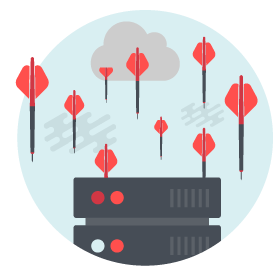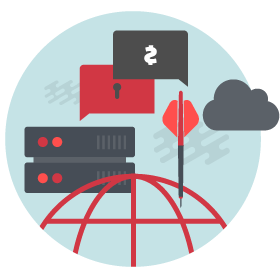Distributed denial of service (DDoS)
A DDoS attack is a form of cyberattack in which the perpetrators seek to disrupt or crash a website, network or other online service by overloading it with a high volume of fake or junk requests.
A DDoS attack is a form of cyberattack in which the perpetrators seek to disrupt or crash a website, network or other online service by overloading it with a high volume of fake or junk requests.
There are several motivations for a DDoS attack. For cybercriminals, these typically include earning money by selling DDoS attacks as a service, blackmailing potential targets into paying a ransom, hacktivism and gaining a competitive advantage.
Sophisticated threat groups are known to use DDoS attacks mostly as a part of or as a distraction from other, more severe activities such as cyberespionage and cybersabotage.

Perpetrators of DDoS attacks use networks of distributed, compromised devices to disrupt systems by targeting one or more of the components necessary to establish a connection (see the OSI model) to a network resource.
As the name suggests, the difference is mostly in the number of attacking machines. In the case of DoS, the attack typically utilises a script or tool, originates from a single device and targets one specific server or endpoint. In contrast, DDoS attacks are executed by a large network of attacker controlled compromised devices also known as a botnet and can be used to overload selected devices, applications, websites, services or even victims’ whole networks.
The most obvious telltale sign of a DDoS attack is poor performance or the unavailability of the targeted system or service. In case of a website, this might translate into long load times or inaccessibility to people inside and outside the organisation. There are also publicly available services monitoring DDoS attacks such as downforeveryoneorjustme.com or downdetector.com

DDoS attacks can be hard to mitigate for organisations that don’t have the right resources, such as hardware or sufficient bandwidth. However, there are things even small and medium companies can do to increase their protection:
Get effective protection with the capabilities to mitigate the risks related to DDoS attacks. ESET multilayered endpoint security solutions use sophisticated Network attack protection technology with advanced filtering and packet inspection to prevent disruptions.